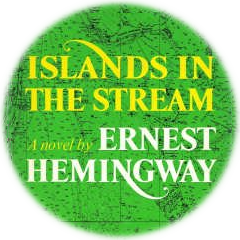Islands in the Stream (Book)

Islands in the Stream
1950 AD - 1970 AD
he first of the posthumously published novels of Ernest Hemingway. The book was originally intended to revive Hemingway’s reputation after the negative reviews of Across the River and Into the Trees. He began writing it in 1950 and advanced greatly through 1951.
The work, rough but seemingly finished, was found by Mary Hemingway among 332 works Hemingway left behind at his death. Islands in the Stream was meant to encompass three stories to illustrate different stages in the life of its main character, Thomas Hudson. The three different parts of the novel were originally to be titled "The Sea When Young", "The Sea When Absent" and "The Sea in Being". These titles were changed, however, into what are now its three acts: "Bimini", "Cuba", and "At Sea"
Hemingway used many of his real life experiences, friends, and relatives to form his stories and base his characters on.
Henry "Mike" Strater, an American painter, spent the summer with Hemingway fishing on Bimini in 1935.
While on Bimini, Gerald and Sara Murphy, good friends of Hemingway, lost their young son, Baoth, to illness. Hemingway's grief for the loss is captured in letters to the Murphys.
During WW II, Hemingway hunted for U-boats aboard his boat Pilar. His boat was outfitted with communications gear provided by the US Embassy in Havana.








